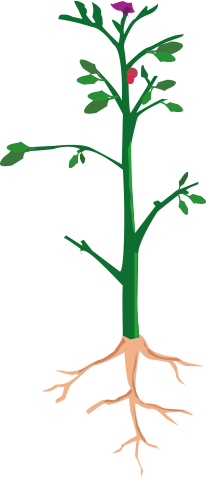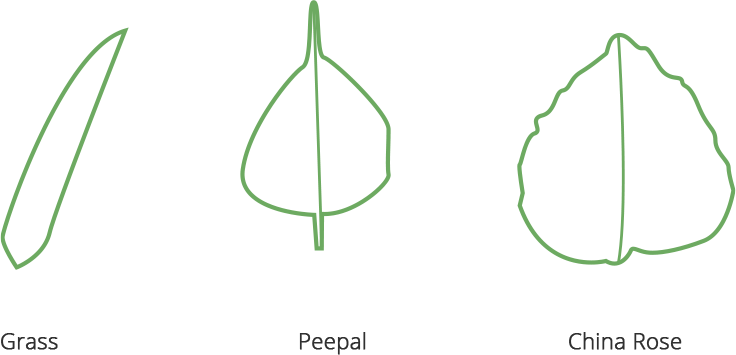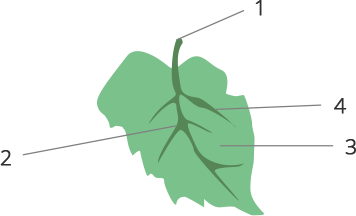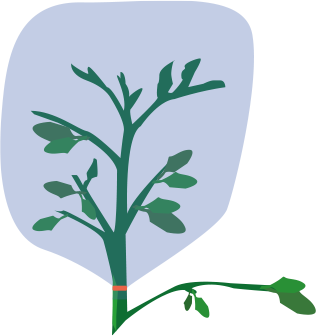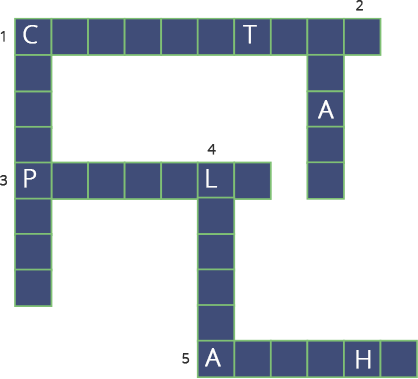Class 6 Science NCERT Exemplar Solutions Chapter 7 Getting to Know Plants
FAQs on NCERT Exemplar for Class 6 Science Solutions Chapter 7 Getting to Know Plants
1. How many questions in total are present in the NCERT Exemplar Solutions booklet for Class 6 science Chapter 7 getting to know plants?
The total number of practice questions available in the NCERT Class 6th Science Exemplar book is 19. It includes an array of questions that are asked on a particular topic from the chapter. From multiple-choice questions, short answers, hots, to long answer questions it consists of all. In order to score good marks in the examination, students should prepare and solve all the questions and should verify them through the exemplar NCERT solutions.
2. How many words do I have to write for a long answer question in Class 6th science exam?
Different types of questions demand different types of explanations. However, when it comes to answering long answer questions, then students should write at least 120-160 words answers for a single long answer question. Also, make sure the points you elaborate on and include in your answer have a base from NCERT books or NCERT Exemplar books. For better clarity on the way of answering the question, seek the assistance of your concerned faculty or teacher.
3. Is it important to practice diagrams mentioned in NCERT Exemplar Class 6 Science Solutions Chapter 7 Getting to Know Plants?
Yes, diagrams are an equally important part of the subject like the theoretical part when it comes to CBSE Class 6th exams. Therefore students should practice all the diagrams mentioned in NCERT Books and solutions to grab more marks and a higher percentage in their exams. Some of the main diagrams from the Getting to Know Plants chapter are diagrams of parts of plants, diagrams of a leaf.
4. Can you please tell me some important definitions to learn for preparing the Getting To Know plants chapter for a test?
In the Class 6th science chapter getting to know plants there are plenty of important definitions that students should learn efficiently before appearing in exams. But start with the main definitions of different parts of the plants. It includes roots, stems, leaves, flowers and fruits. Try to learn both short answer definition and long answer definition for all these parts of the plants.
5. Do revision notes actually play an important role before appearing for a science exam?
Yes, science is a subject that is entirely based on what you have understood from your reading of the chapter. Revision notes play an important role in the revision process before your exams. In fact, the teaching faculty at Vedantu also suggest students to go through the crisp revision notes before appearing for the exam. In the least time, possible revision notes help you in revising the whole chapter easily.
Recently Updated Pages
NCERT Exemplar for Class 12 Biology Chapter 16 - Environmental Issues (Book Solutions)

NCERT Exemplar for Class 12 Physics Chapter 15 - Communication Systems (Book Solutions)

NCERT Exemplar for Class 12 Chemistry Chapter 5 - Surface Chemistry (Book Solutions)

NCERT Exemplar for Class 12 Biology Chapter 9 - Strategies for Enhancement in Food Production (Book Solutions)

NCERT Exemplar for Class 12 Physics Chapter 5 - Magnetism And Matter (Book Solutions)

NCERT Exemplar for Class 12 Physics Chapter 8 - Electromagnetic Waves (Book Solutions)

Trending pages
Textbooks Solutions for CBSE and ICSE Board of Class 1 to Class 12

NCERT Exemplar Class 10 Science (Book Solutions)

NCERT Exemplar Problems with Solutions - Free PDF Download

NCERT Exemplar for Class 9 Science

NCERT Class 10 Maths Book Solutions For Conceptual Development

Class 9 Math NCERT Exemplar Chapter wise Solutions - Free PDF Download

Other Pages
Free Height Converter Calculator (Feet, Inches & Cm)

Million to Rupees Calculator: Convert Million Values to Indian Rupees

1 Billion in Rupees: Explained with Examples & Conversion

Month Names for Students: Meanings and Easy Practice

What is the Full Form of AM and PM?

Explore the Newest English Words and Their Meanings







